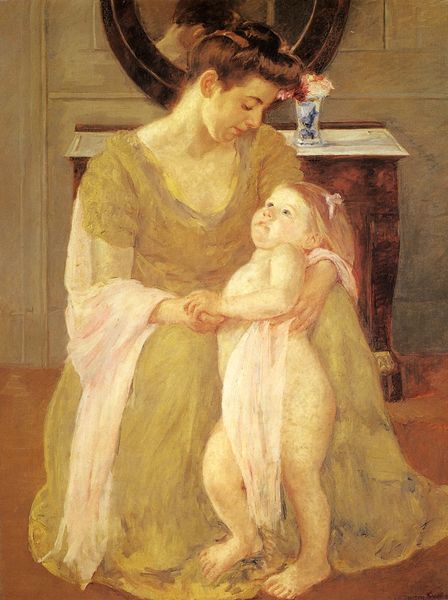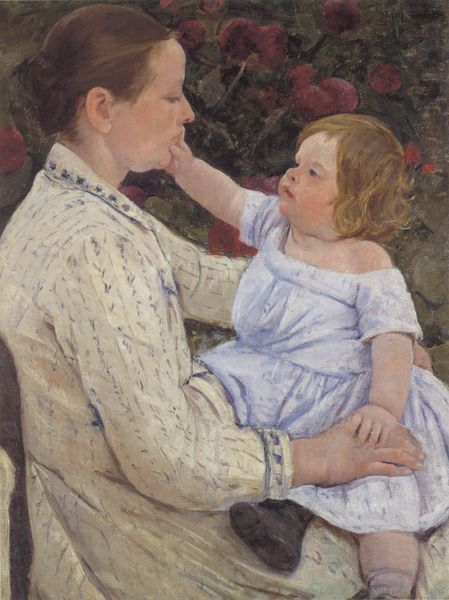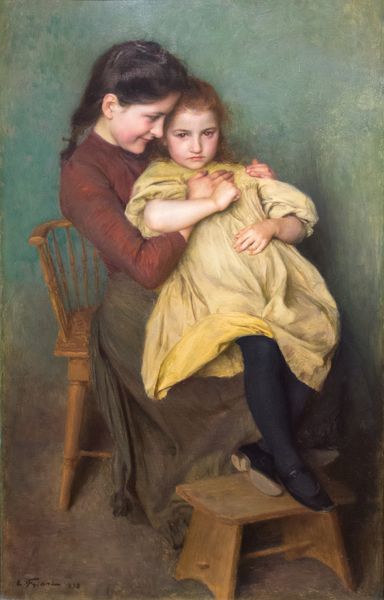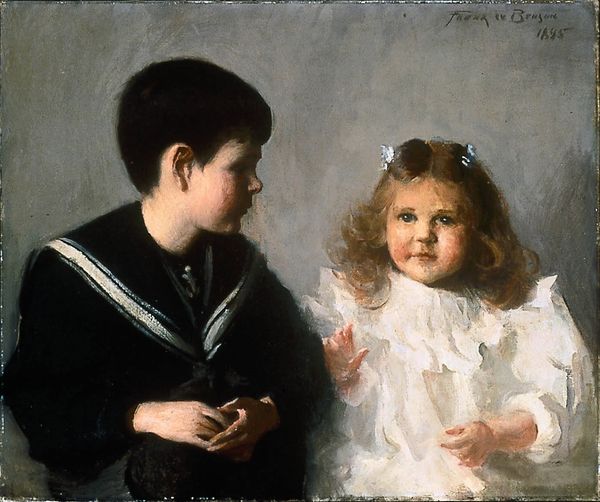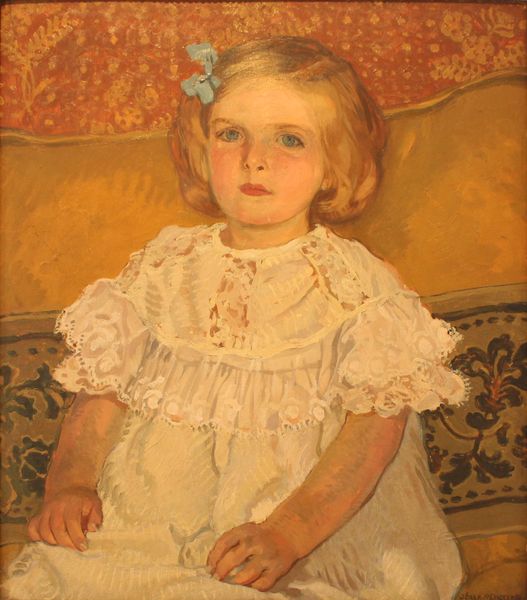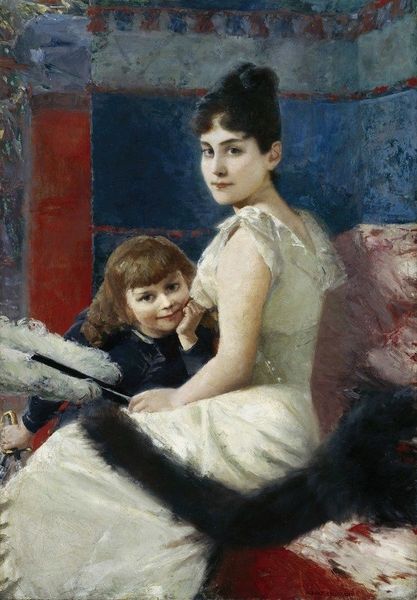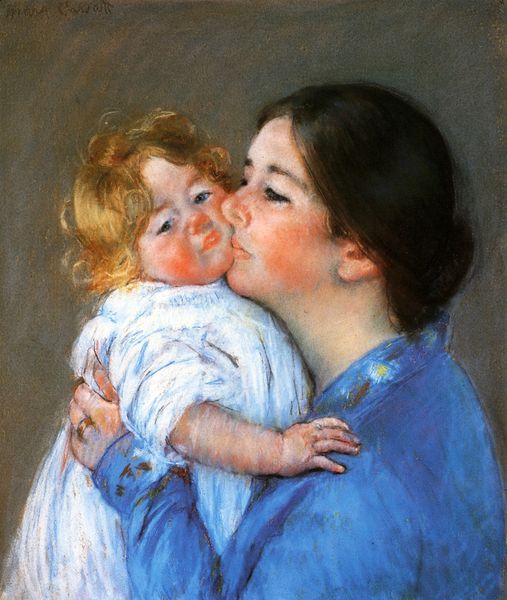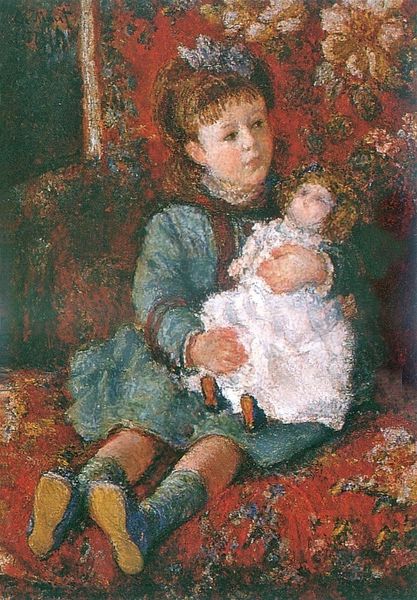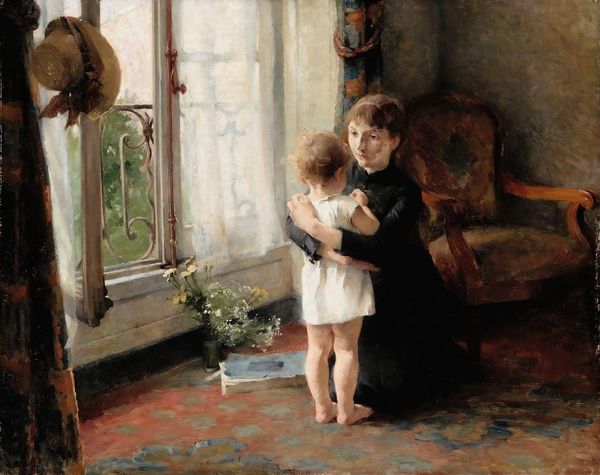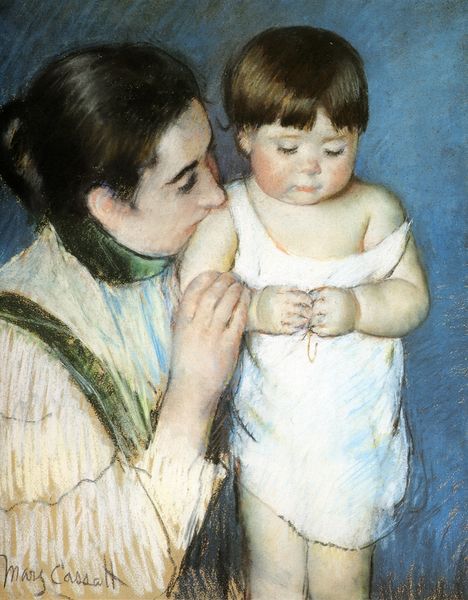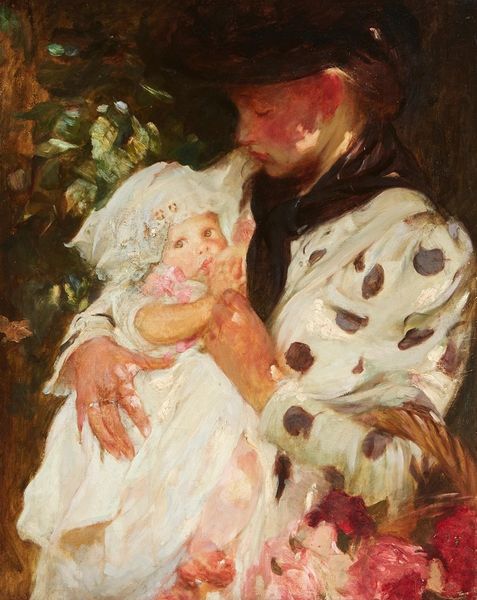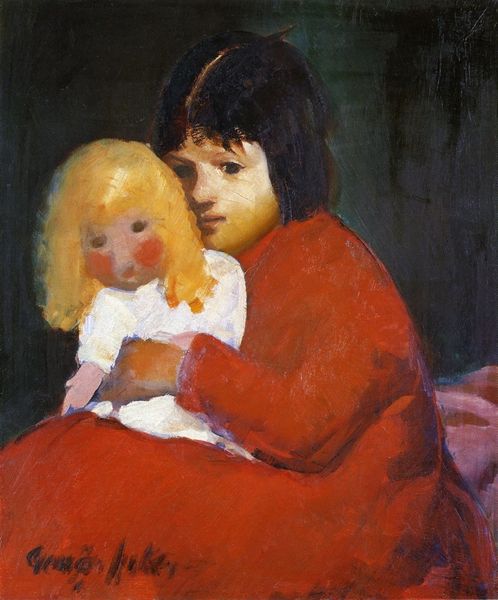
Portrait of Madame Goldner Max and Her Daughter Juliette 1915
0:00
0:00
theovanrysselberghe
Private Collection
Dimensions: 123.5 x 86 cm
Copyright: Public domain
Editor: Here we have Theo van Rysselberghe’s 1915 oil painting, "Portrait of Madame Goldner Max and Her Daughter Juliette." I’m struck by the detail in their clothing and how it contrasts with the haziness of the background. What do you make of it? Curator: Well, let's start with the obvious. It's oil paint, a commodity, traded and manufactured, even back then. It would be enlightening to understand where Rysselberghe sourced his materials during that particular historical period, specifically 1915, right? World War I was raging. Were the pigments easily available? Did the war economy impact their cost and quality? Editor: That’s something I never considered. So the materials themselves can tell us a story about the context of its creation? Curator: Precisely! The canvas, the pigments, even the brushes, all had a production line, workers involved in their manufacture, resource extraction... Focusing on that can unravel interesting connections. Beyond the surface of an Impressionist portrait, we begin to unravel social realities. Notice how their attire suggests the labor involved, fabrics sourced from somewhere, crafted by someone, pointing to a system of production and consumption. Editor: So you’re suggesting that looking at the painting as a constructed object reveals the socio-economic dynamics of the time? Curator: Absolutely. The 'art' is not divorced from the labor and industry. Now, what does the materiality and the execution of the surface – the texture of the paint – tell us? Is it about celebrating individual genius, or is it reflective of wider forces at play within the social construction of value and beauty? Editor: This definitely gives me a new way to consider not just art, but the world. It all comes down to the nitty gritty! Curator: Indeed. Seeing the artwork in the context of its material origins broadens our understanding of its place in the world and how much our environment is influenced by a set of market and production constraints.
Comments
No comments
Be the first to comment and join the conversation on the ultimate creative platform.
